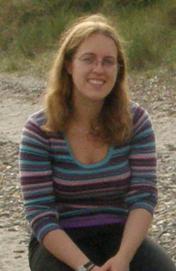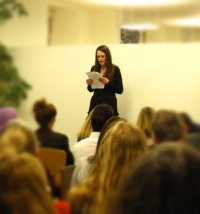Our training afternoons are scheduled in line with the eight-week terms of Oxford, the names of which can bemuse newcomers to the university, though now, at the end of Trinity Term, I think that I have assimilated it. Since the last update in February, there have been many more training courses, including lots of library visits—everyone likes a library visit.
First, though, there were several talks by people working elsewhere in the Bodleian and even in other sectors, such as the session on the book trade, where we heard from people who work at Blackwell’s and the antiquarian dealer Quaritch. This was an interesting look into a different, though related, area of work. Talks by those who worked at Osney in the Collections and Resource Description department, which is a central Bodleian Libraries department, were also very interesting. This covered areas such as the processes of acquisitions (ordering, processing, and all the many and diverse tasks attached, on behalf of the main Bodleian and several smaller libraries), electronic resources (the only element of the Bodleian that is completely centralised), legal deposit operations (including developments in electronic legal deposit), resource description and open access. Much of the information here was on things that I already knew about tangentially through my work at the Law Library, or explanations of mysterious processes that I know of but didn’t know the background of. It made me feel part of the community, however, being able to nod wisely at the mention of Swets’ demise or the fact that legal deposit books beginning with ‘M’ are catalogued at Osney as part of the Shared Cataloguing Programme run by the British library.

In Trinity Term we have also had talks from subject librarians on the role of subject consultant, and talks by the Head of Assessment and the Head of Heritage Science for the Bodleian Libraries. We learnt that a liaison librarian, a reference librarian and a research support librarian may be a similar job to a subject consultant, but that by the same token, a subject librarian’s role is very particular to their institution and their department. The various responsibilities were covered, from those to do with the subject collection and library management duties, to reader services, library projects and outreach and conferences. We then had an exercise on handling budgets, which saw my team – in charge of the slightly larger budget for science – overspend by £14,000. Before any future employers bury their heads in their hands, I’d like to point out that the game was rigged! It was pre-ordained that science’s budget would be the one greatest hit by expensive e-journal packages and VAT increases, no matter how conservative we were with our money initially. We definitely kept our readers happy with lots of resources though, even though the central finance department probably wouldn’t be best pleased. In the later set of talks, Frankie Wilson, Head of Assessment, told us all about how to gain meaningful feedback on library services, while David Howell showed us round his bespoke lab in the Weston Library in order to tell us a bit about the role of science in uncovering library treasures, a unique aid to research and one that hit the headlines when David’s hyperspectrometry revealed an ancient Mexican codex palimpsest.
Then there were the library visits. First, to the digital archives and then to All Souls’ Codrington Library, which was a striking contrast between the old and the new: the latest in digital archiving systems at the Bodleian Electronic Archives and Manuscripts department and the long tradition in All Souls’ Codrington Library, founded in the fifteenth century. At BEAM, we learnt that a hard drive has roughly half the lifetime of a cassette tape, and digital archiving seeks to preserve many types of slowly obsolescing technologies. The challenge of collecting and storing data from diverse electronic mediums, including floppy disks, CDs and flash drives, is considerable, and we learnt about the various strategies that are in place for each of them. There is also the task of archiving the web, and the Bodleian has several areas of interest that are regularly crawled and archived, a process that is also not without its challenges. By contrast, at the Codrington, the weight of centuries lingers in the air. The beautiful hall and the wonderful librarians’ office (with its spiral staircase and wall-to-wall books, it’s every bookworm’s dream) have a history all of their own, and we had a talk from the librarian, Gaye, on both the library and some of its collections. We heard about our fellow trainee and her role in the small library team, and had the chance to ask some questions.

Next there was the Alexander Library of Ornithology, the Sherardian Library and the Radcliffe Science Library, which were fascinating, despite not having a single science degree among us. In the Sherardian, we heard about the Herbarium, where pressed plants that act as authority records for plant types, and are accompanied by the print collections which are used alongside the library of plants in order to support current and historical research in botany. We saw a first edition of Charles Darwin’s ‘Origin of Species’, and William Dampier’s account of his circumnavigations of the globe which brought a wealth of knowledge back to Britain (as well as being the inspiration for books such as R.L. Stevenson’s ‘Treasure Island’), and we also learnt about figures such as Sherard, Druce, and Fielding, important for the Oxford collections. At the RSL, after a quick tour, the pièce de résistance was clearly the 3-D printer. Having been sceptical about when I first saw it on the itinerary, I went away understanding how such technology services fit into the RSL’s ethos and enthusiastic about what we’d be shown. By offering access to such technology early on, as they did with e-book readers and will be doing with virtual reality hardware, the RSL is able to grant students and researchers access to technology that would be hard to find elsewhere, and facilitate learning through their services—in other words, exactly what a library is there for.
![Vol. 01[1], t.4: Fraxinus Ornus](http://blogs.bodleian.ox.ac.uk/oxfordtrainees/wp-content/uploads/sites/133/2017/06/plasci002_aaf_0020_3.jpg)
Finally, there were a few extra courses that I went on, Advanced Searching: overview of Google and alternative search tools, Annual Review Training for Reviewees, and Practical Skills: minute taking. These were all relevant for my work in the Law Library, and in particular the course on advanced searching with Google, run by Karen Blakeman, was very interesting and has affected the way that I search online. The final run of training in Trinity Term will mark the end of our afternoon sessions, and it will culminate in the Trainee Showcase, where we give presentations on the projects that we have undertaken throughout the year.








Recent Comments